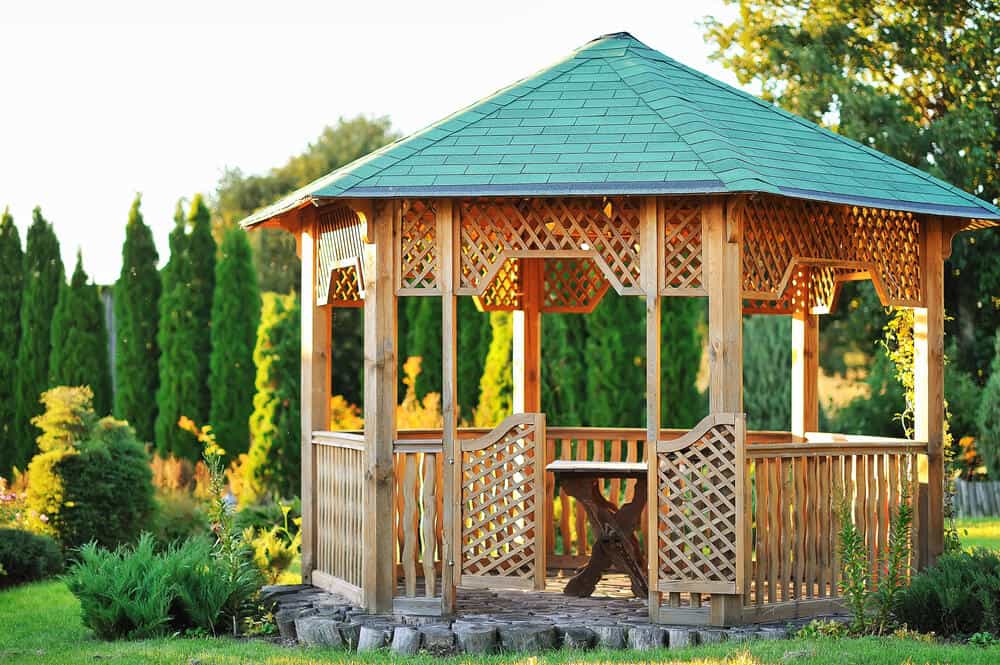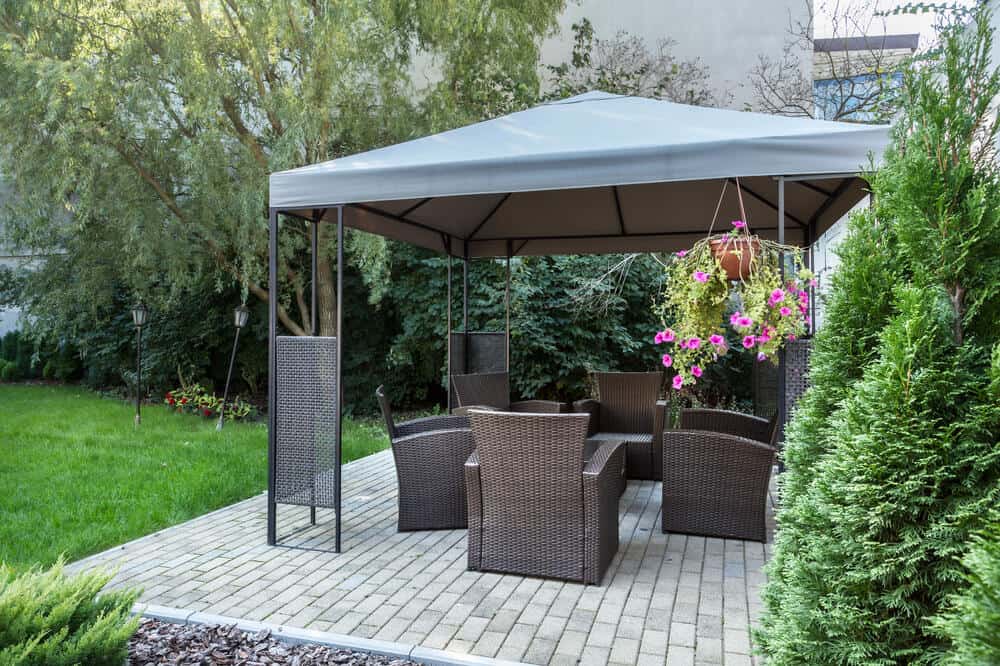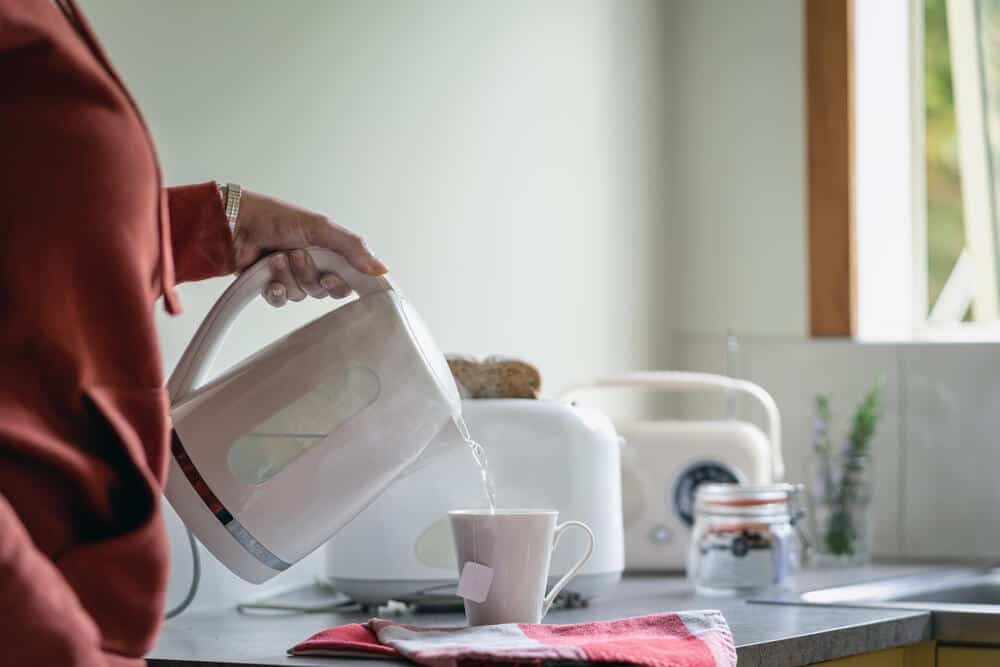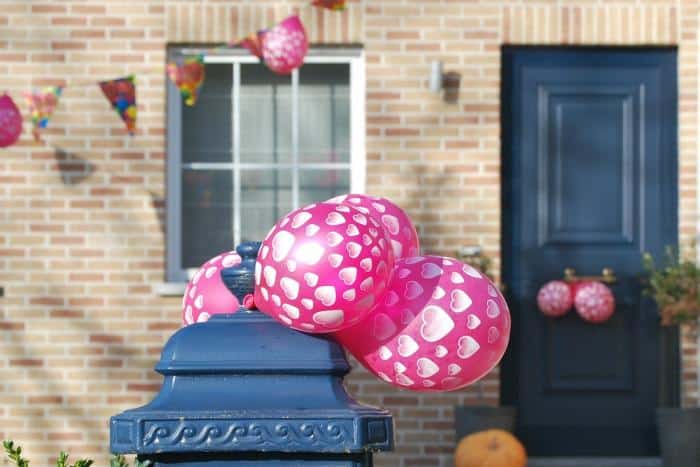How to Prevent Pooling in Your Outdoor Shelter
If you have an outdoor shelter, such as a gazebo, you know how delightful it can be to have a shaded area for relaxation, gatherings, or dining outside.
However, one of the common issues that can hamper this experience is water pooling.
Whether it’s from heavy rain or morning dew, water accumulation can cause damage and create an uncomfortable environment, causing all kinds of issues long term.
Preventing pooling is essential to maintaining the longevity and usability of your outdoor shelter.
In this guide, we’ll explore practical steps you can take to ensure your gazebo remains dry and inviting all year round.
Installing a Gutter System
If you have an outdoor shelter such as a gazebo, one of the most efficient ways to prevent pooling is by installing a gazebo gutter system.
These gutters work similarly to those on houses, directing rainwater away from the structure and preventing it from gathering on the roof or around the base.
Choose the right gutters by considering materials that are durable and weather-resistant, such as aluminium or PVC.
These materials are lightweight yet sturdy, ensuring they can handle heavy rainfall without deteriorating over time.
Ensuring Adequate Roof Pitch

The roof pitch, or the angle of your gazebo’s roof, plays a significant role in water drainage.
A steeper pitch allows water to run off more quickly, reducing the chances of pooling.
Evaluate your roof pitch and check if your shelter’s roof has an adequate slope.
Ideally, a pitch of at least 30 degrees is recommended for optimal water runoff.
Using Waterproof Covers
Waterproof covers are an excellent addition to your shelter, offering an extra layer of protection against water pooling.
These covers are designed to repel water, keeping your outdoor shelter dry and comfortable.
When selecting a cover, look for ones made from high-quality, waterproof materials.
Ensure the cover fits your shelter properly, providing full coverage without gaps where water can seep through.
Secure the cover tightly to prevent it from being dislodged by wind or heavy rain.

Improving Ground Drainage
While roof drainage is crucial, don’t overlook the importance of ground drainage.
Proper ground drainage ensures that water doesn’t pool around the base of your shelter, which can lead to structural damage and create a muddy mess.
Ensure the ground around your gazebo slopes away from the structure.
This encourages water to flow away, reducing the chances of it pooling around the base.
Regular Inspections and Maintenance
Preventing water pooling isn’t a one-time task; it requires ongoing attention and maintenance.
Regular inspections can help you identify potential issues before they become major problems.
Periodically inspect your gutters, downspouts, and drains for any blockages.
Clear out debris promptly to ensure efficient water flow.
Look for any damage or wear on your shelter’s roof and cover.
Repair or replace damaged areas to maintain their protective function.
Final Thoughts
Preventing pooling in your outdoor shelter is crucial for maintaining its functionality and appearance for years to come.
Regular maintenance and inspections will help you stay ahead of any potential issues, allowing you to enjoy your outdoor space without worry.
With these steps, your shelter will remain a comfortable and inviting retreat, no matter the weather.
Photo Credit: Depositphotos
Discover more from Zena's Suitcase
Subscribe to get the latest posts sent to your email.





